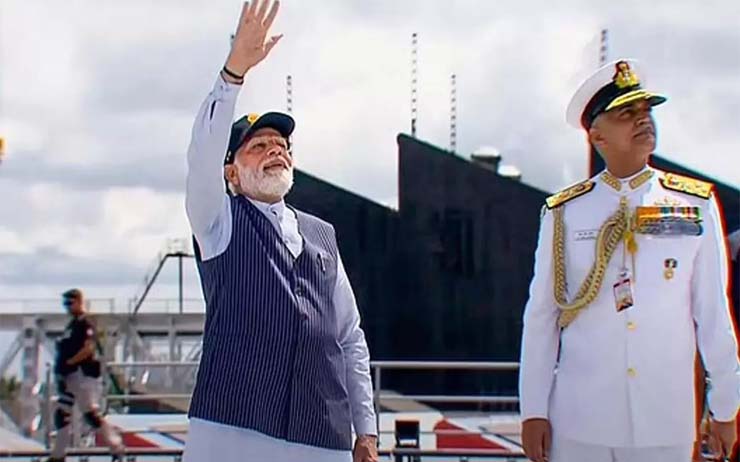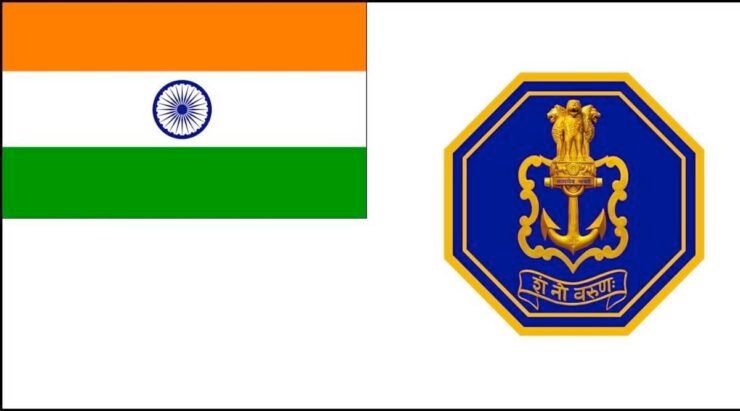
INS Vikrant commissioned by Prime Minister Narendra Modi as part of the 75th anniversary of Indian independence is the first aircraft carrier to be built in India. The new indigenously built 45,000-ton aircraft carrier will propel India into the elite club of six nations that can design, and build their own aircraft carriers.
Vikrant meaning courageous in Sanskrit will have the capacity to carry about 30 Aircraft including fixed-wing Helicopters, UAVs and accommodate a crew of 1700 officers and sailors. The Aircraft carrier is 260 metres long, 62 metres wide and almost 60 metres high. It has a maximum speed of 52 knots and a cruising speed is 33 knots/ hour. It has 2300 compartments. It will be initially equipped with a squadron plus MiG 29 K fighters and Kamov 31 aircraft which will be later replaced by F/A 18 Super hornet, Rafale and Tejas aircraft.
Vikrant can travel self-contained for 13890 km non-stop. The ship has 14 stories and two heavy-duty lifts to take up aircraft to Runway and bring them back to covered shelters. Vikrant will be a potent weapon platform and floating Airfield to check any intrusion in the Indian Ocean.
Aircraft Carriers are the pride of any Navy. Aircraft Carriers supported by a fleet of destroyers, frigates, corvettes, minesweepers, and submarines are the core of any battle group, and can swiftly cover long distances on the high Seas.
Given the fact that the Indian Navy’s role is to keep an eye on a 7516 km long maritime boundary, off-shore Islands and 2.4 million square km of exclusive economic zone, India really needs to maintain at least three aircraft carriers in the Bay of Bengal, the Arabian Sea and the Indian Ocean. They may seem to be white elephants in terms of the cost of building/acquisition and maintenance, but essential to secure our maritime frontiers.

If we explore the past, INS Vikrant India’s first Aircraft carrier was a former majestic class aircraft carrier called HMS Hercules built for the Royal Navy during World War II but surprisingly never commissioned in British Navy. India procured the incomplete carrier from the British Navy in 1957 and commissioned it in the Indian Navy (pennant number R11) in 1961. Captain Pritam Singh Mahindroo was its first commanding officer. The 210 metres long, 40 metres wide and 10-metre high carrier had a displacement weight of 19,500 tons and could travel at the speed of 25 knots. It had a catapult-assisted take-off system and could carry 23 Aircraft/ Helicopters.
During the 1971 war INS Vikrant supported by INS Brahmaputra and INS Beas (Leopard-class frigates), INS Kamorta and INS Kavaratti (Petya III-class corvettes) and INS Khanderi (submarine) cordoned off East Pakistan from the Bay of Bengal and launched Hawker Sea Hawks (INAS 300), and Alize anti-submarine aircraft (INAS 310) to raid Chittagong harbour. The US seventh fleet led by USS Enterprise tried to enter the Indian Ocean and threaten India but Vikrant Carrier group supported by Russian Submarines held fort. Finally, after 40 years of service, INS Vikrant was decommissioned on 31 Jan 1997 and harboured in Mumbai as a museum ship before being auctioned as scrap in 2014.
India’s second aircraft carrier INS Virat a 28,700-ton warship too was procured from the British Navy. Previously called HMS Hermes it entered the Royal Navy in 1959 and participated in Falkland War in 1982. Commissioned in the Indian Navy in 1987, it was 226 metres long. 48 metres wide and 9 metres high. It carried Sea Harrier (VTOL) and Sea King aircraft as well as Dhruv helicopters. After nearly 29 years of service INS Virat too was decommissioned in 2016.

INS Vikramaditya, the third and still serving Aircraft carrier of the Indian Navy was commissioned in 2013. A 45,500-ton Kiev Class Russian Aircraft Carrier named Marshal Gorchakov was commissioned in Soviet Navy in 1987 and decommissioned almost seven years later in 1994 following the collapse of the Soviet Union. India purchased it from Russia after a total overhaul and modifications. It was equipped with 26 MiG 29 K, 4.5 generation naval aircraft and 10 Kamov 31 helicopters. INS Vikramaditya is today the flag Ship of the Indian Navy. Now INS Vikrant will join as the younger sea warrior to further strengthen the maritime strike capability of the Indian Navy.
-The writer is an Indian Army veteran and a defence analyst. He has keen interest in Geo-strategic affairs and writes regularly on internal and external affairs issues related to India and neighbours. The views expressed are personal and do not necessarily reflect the views of Raksha Anirveda.








